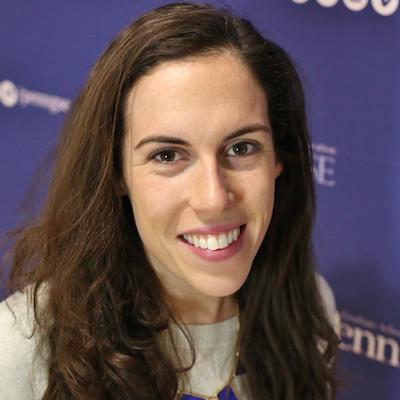A Day in the Life: Urban Teacher Apprenticeship Program -Elementary Education
The first semester in the Elementary Education Urban Teacher Apprenticeship Program (UTAP) is packed with classes and fieldwork. It’s busy, but we dedicate the majority of the first semester to classes and two and a half days of our school placement site, so we can mainly focus on our teaching practice during the second semester of the program. Every day is slightly different, but on Wednesday’s in the second half of the fall semester -also known as “Term III” to those in theUTAP Elementary Education program –we have a field placement site and classes, making it a great example of what a typical “day in the life” of a first semester UTAP Elementary cohort member is.
On Wednesday morning, I get in my car around 7:00 am to head towards my Pre-K placement in Fishtown from my house in West Philadelphia. I am in the Elementary Education program, but the Pennsylvania Teaching Certification goes from Pre-K –4th grade,so we are required to spend a certain number of hours in a Pre-K classroom to become fully certified to teach.We spend our Wednesday morning in a Pre-K placement site for six weeks in a row. All student teachers are placed in Pre-K sites close to their school placement so we have greater opportunities to connect with institutions and families within the communities we work in as student teachers. My preschool placement site was founded by a parent at the school I student teach in, and some siblings of students in my elementary placement class attend the school. I hope to eventually teach third or fourth grade; however, the Pre-K placement provides an excellent opportunity to deepen my understanding of child development and observe ways to best support the earliest of learners. We work in the Pre-K site until lunch time, then I head back to the Graduate School of Education building at Penn for the next part of the day –Child Development and Literacy Methods!
One of the best parts of the program is that all of our classes and field work are integrated. We are able to directly bring our observations of what we did during our elementary or Pre-K site placement into the classroom, andimplement strategies discussed in class into our school placement.I have two other Penn UTAP classmates that student teach in different grades at my elementary andPre-K student teaching site; however, all of myclasses are taken with all members of the UTAP cohort.Child Development dives into traditional and modern developmental theorists, and we directly apply what we see in the children we work with, and discuss how our placement sites are using similar or different strategies to support their students’ development. As a former Human Services major, I absolutely love learning more about child development so I can better understand student behavior and support my future students socially and emotionally. Literacy Methods discusses theory and the foundational literacy components as well, but we also read, observe videos and practice specific literacy practices, such as guided reading and Writer’s Workshop. Literacy Methods helps us understand the theory behind specific practices, then give us the space to learn more deeply through practice and collaboration with others.
Especially on our longest day of school placement and class on Wednesday, the cohort model is a great support network. We collaborate on different ideas for our school placement sites, learn new strategies that people may have observed in their fall placement classroom, and chat about interactions we had with students.In between Child Development and Literacy Methods, we almost always go somewhere on campus–the Graduate Student Center, the library, the GSE Lounge –to do work and catch up on the rest of the week. Wednesdays are long, but the cohort completes it together.

